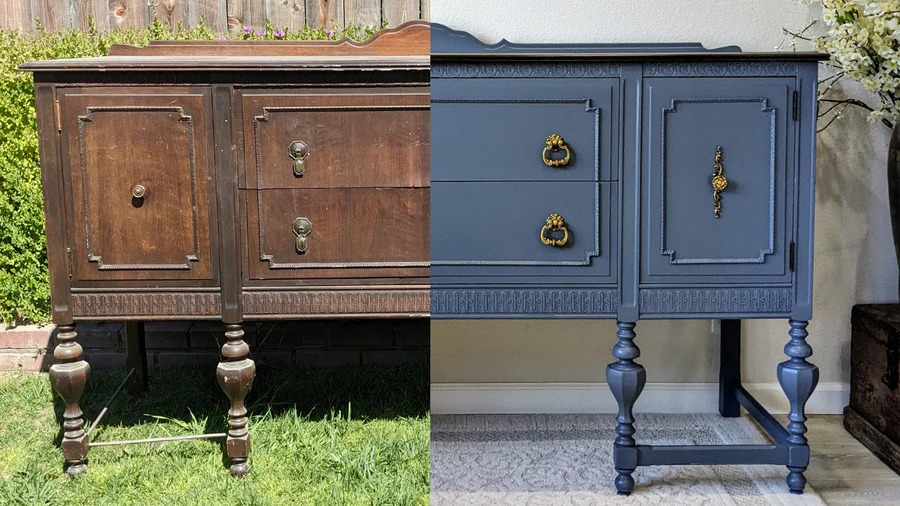Is Furniture Stripping and Refinishing Worth It? A Cost-Benefit Analysis
When you’re staring at a worn dining table that’s been in your family for decades or a vintage dresser with chipped paint from a flea market find, you face a critical decision: restore it or replace it? Furniture stripping and refinishing might seem like an expensive or time-consuming option, but for many homeowners, it’s a smart investment that pays dividends in both financial savings and sentimental value. This comprehensive cost-benefit analysis will help you determine whether refinishing your furniture is the right choice for your situation.
Understanding Furniture Stripping and Refinishing
Before diving into the numbers, it’s important to understand what furniture stripping and refinishing actually involves. Furniture stripping is the process of removing old paint, varnish, or finish from wooden furniture to expose the bare wood underneath. Refinishing follows, where the wood is sanded, treated, stained (if desired), and sealed with a new protective finish.
This process can transform tired, damaged pieces into stunning focal points for your home. Whether you’re dealing with antique furniture, family heirlooms, or quality solid wood pieces showing their age, professional refinishing can breathe new life into these items.

The True Cost of Furniture Stripping and Refinishing
Professional Refinishing Costs
When you hire professionals for furniture stripping and refinishing, costs vary based on several factors:
Size and Complexity: A simple chair might cost $150-$300 to refinish, while a large dining table with intricate details could run $500-$1,200 or more. Complete bedroom sets typically range from $1,000 to $3,000 depending on the number of pieces and their condition.
Condition of the Piece: Furniture requiring extensive repair work—fixing loose joints, filling deep scratches, or rebuilding broken components—will cost more than pieces needing only surface refinishing.
Type of Finish Desired: A basic stain and polyurethane finish costs less than specialty finishes like hand-rubbed oil, lacquer, or antique reproduction finishes that require multiple applications and expert technique.
Geographic Location: Refinishing costs vary by region, with urban areas typically charging more than rural locations. However, experienced craftspeople with decades of expertise often deliver superior results that justify their pricing.
DIY Refinishing Costs
If you’re considering the do-it-yourself route, budget for:
- Chemical strippers: $15-$40 per quart
- Sandpaper and sanding blocks: $20-$50
- Stain: $10-$30 per quart
- Finish (polyurethane, varnish, or oil): $15-$50
- Brushes, rags, and protective equipment: $30-$60
- Time investment: 15-40 hours depending on piece complexity
Total DIY costs typically range from $100-$250 in materials, but this doesn’t account for the significant time investment or the learning curve involved. First-time refinishers often make costly mistakes that can damage furniture or require professional intervention to correct.
The Cost of Replacement: The Alternative Perspective
To truly understand whether furniture stripping and refinishing is worth it, compare it against replacement costs:
New Furniture Prices
Solid Wood Quality Furniture: A new solid wood dining table comparable to a vintage piece can cost $1,500-$5,000. Bedroom sets range from $2,000-$8,000 for quality construction. These prices reflect mass-produced items that often lack the craftsmanship and character of older pieces.
Fast Furniture Options: While big-box stores offer cheaper alternatives ($300-$800 for dining tables, $500-$1,500 for bedroom sets), these are typically made from particleboard or veneer with limited lifespan—often lasting only 5-10 years compared to solid wood furniture that can last generations.
Antique or Vintage Replacements: Finding comparable vintage pieces in good condition can be expensive and time-consuming. Quality antique furniture in excellent condition often costs as much or more than refinishing your current piece.
Benefits Beyond the Price Tag
Environmental Impact
Furniture stripping and refinishing is an inherently sustainable choice. The furniture industry contributes significantly to deforestation and landfill waste. By refinishing existing furniture, you:
- Prevent solid wood furniture from ending up in landfills
- Reduce demand for new timber harvesting
- Avoid the carbon footprint of manufacturing and shipping new furniture
- Support a circular economy that values longevity over disposability
A single refinished dresser keeps approximately 150-200 pounds of waste out of landfills while eliminating the energy consumption and emissions associated with producing a replacement.
Superior Quality and Craftsmanship
Older furniture, particularly pieces made before the 1960s, often features construction techniques and materials superior to most modern offerings:
Solid Wood Construction: Vintage pieces are typically made from solid hardwoods like oak, maple, walnut, or cherry—materials that many modern manufacturers reserve only for premium lines or replace entirely with engineered wood products.
Dovetail Joints and Traditional Joinery: Hand-cut or machine-cut dovetail joints, mortise and tenon connections, and other traditional joinery methods create stronger, longer-lasting furniture than the staples, screws, and glue commonly used today.
Attention to Detail: Older furniture often showcases hand-carved details, inlays, and decorative elements that add character impossible to replicate in mass-produced items.
Sentimental and Historical Value
Some furniture carries irreplaceable sentimental value:
- Family heirlooms passed down through generations
- Pieces connected to important life events or loved ones
- Antiques with historical significance
- Custom-made furniture with unique stories
No amount of money can replace these emotional connections. Furniture stripping and refinishing preserves these memories while making the pieces functional and beautiful for continued use.

When Furniture Stripping and Refinishing Makes Financial Sense
High-Value Scenarios
Solid Wood Furniture: Any piece made from solid hardwood is almost always worth refinishing. The wood itself has inherent value, and refinishing costs are typically 30-50% less than purchasing comparable new solid wood furniture.
Antique or Designer Pieces: Furniture from recognized makers, periods, or designers often appreciates in value. Professional restoration can increase their worth significantly. For example, a mid-century modern dresser by a known designer might sell for $2,000-$4,000 after professional refinishing, compared to $500 in its worn condition.
Complete Sets: Refinishing a complete dining room set or bedroom suite is more cost-effective than buying new. A six-piece dining set might cost $800-$1,500 to refinish versus $3,000-$6,000 to replace with comparable quality.
Custom or Unusual Sizes: Furniture built for specific spaces or with unique dimensions is nearly impossible to replace. Refinishing is often the only practical option.
When Replacement Might Be Better
Particleboard or Veneer Furniture: If the piece is made from engineered wood products with thin veneer, refinishing often isn’t worth the investment. These materials don’t sand well and can’t support multiple refinishing cycles.
Severe Structural Damage: Furniture with broken frames, significant wood rot, or extensive pest damage might cost more to repair and refinish than it’s worth.
Poor Quality Original Construction: Not all old furniture was well-made. Cheaply constructed pieces from any era aren’t good candidates for refinishing investment.
The Long-Term Value Proposition
Consider the lifespan factor in your calculation:
Refinished Quality Furniture: Properly refinished solid wood furniture can last another 20-50+ years with minimal maintenance. If professional refinishing costs $1,000 and the piece lasts 30 years, your annual cost is roughly $33—far less than replacing cheap furniture every 5-10 years.
Maintenance Costs: Refinished furniture requires minimal ongoing maintenance—occasional cleaning and perhaps re-oiling or touch-ups every decade. New furniture often requires more frequent repairs or replacement as joints loosen and finishes deteriorate.
Appreciation Potential: While most furniture depreciates, professionally refinished antiques and quality pieces can maintain or increase in value, especially from desirable periods or makers.
Choosing the Right Refinishing Service
If you decide furniture stripping and refinishing is worth it, selecting the right professional is crucial:
Key Qualities to Look For
Experience and Expertise: Look for companies with decades of experience. Established businesses with 30+ years in operation have refined their processes and techniques. They understand different wood types, period-appropriate finishes, and how to handle unexpected complications.
Comprehensive Services: The best refinishers offer complete services—stripping, repair, restoration, refinishing, and even upholstery. This one-stop approach ensures consistent quality and simplifies your project management.
Portfolio and References: Request before-and-after photos and customer testimonials. High repeat and referral rates (90% or more) indicate satisfied customers who trust the company with multiple projects.
Transparent Pricing: Reputable refinishers provide detailed estimates that break down costs for stripping, repair, refinishing, and any special treatments. Be wary of vague quotes or prices that seem too good to be true.
Proper Facilities and Staff: Established shops with multiple experienced craftspeople can handle projects efficiently while maintaining quality standards. They should have proper ventilation, dust control, and finishing areas that protect your furniture during the process.
Making Your Decision: A Practical Framework
Use this decision-making framework to evaluate whether furniture stripping and refinishing makes sense for your specific situation:
Step 1: Assess the Furniture
- Is it solid wood or veneer/particleboard?
- What is the current condition (structural and cosmetic)?
- Does it have sentimental or historical value?
- Is it a complete set or individual piece?
Step 2: Calculate Costs
- Get professional refinishing quotes from 2-3 reputable companies
- Research replacement costs for comparable quality furniture
- Factor in your time if considering DIY
Step 3: Consider Intangibles
- Environmental impact
- Emotional attachment
- Uniqueness or irreplaceability
- Long-term value and durability
Step 4: Think Long-Term
- How long will the refinished piece last?
- What are the maintenance requirements?
- Could it become more valuable over time?
Real-World Success Stories
Customers consistently report high satisfaction with professional furniture refinishing. Families transform disliked heirlooms into beloved centerpieces. Homeowners discover that pieces they considered replacing become conversation starters after expert restoration. The combination of preserving memories, saving money compared to quality replacements, and achieving stunning aesthetic results makes furniture stripping and refinishing a worthwhile investment for most solid wood furniture.
Whether it’s a 40-year-old door restored to look brand new, a complete bedroom set that looks better than when originally purchased, or grandparents’ furniture made even more special through expert refinishing, the results speak for themselves.
The Verdict: Is Furniture Stripping and Refinishing Worth It?
For solid wood furniture with good structural integrity, furniture stripping and refinishing is almost always worth the investment. The cost typically runs 30-70% less than purchasing comparable quality new furniture, while delivering superior results that last decades longer than budget alternatives.
The value proposition becomes even stronger when you factor in:
- Environmental benefits of reducing waste
- Preservation of sentimental items
- Superior quality of vintage craftsmanship
- Long-term durability and potential appreciation
Even when refinishing costs approach replacement prices, the intangible benefits—environmental responsibility, emotional connections, and superior quality—often tip the scales toward restoration.
The key is choosing the right pieces (solid wood, good structure, meaningful value) and the right professionals (experienced, comprehensive services, fair pricing, proven track record).
Ready to Transform Your Furniture?
If you’re considering furniture stripping and refinishing for your treasured pieces, don’t leave the outcome to chance. Contact Tri-County Furniture Restoration today for a detailed quote or call us to speak with our experienced team. Let us show you how professional refinishing can transform your furniture and exceed your expectations.

